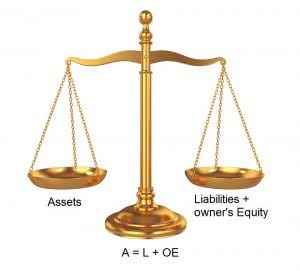However, if the fund only makes a 5% return, falling below the hurdle rate, the managers would not receive any carried interest for that year. For example, consider two mutual funds with an initial investment of $10,000, an annual return of 8%, but one charges a 1% management fee while the other charges 0.5%. Over 20 years, the difference in net returns can be substantial, with the lower-fee fund providing a higher ending balance to the investor.
- While management fees are a necessary part of the investment process, their size and structure are critical factors that can influence both investor decisions and fund performance.
- It’s a complex topic that intertwines finance, economics, and policy, reflecting the multifaceted nature of investment strategies and their impact on both fund managers and investors.
- An experienced bookkeeper will charge a higher monthly rate or a fixed cost for their services than those with less experience.
- While this can be advantageous for investors with larger portfolios, as the fee remains constant, it may not incentivize fund managers to maximize returns.
- Let us partner with you, providing expert guidance and support to navigate these tax strategies effectively.
- Cost accounting’s findings and reports on internal costs, expansion opportunities, and financial data are all crucial to other teams’ decision-making and strategies for business improvement.
- The IRS requires taxpayers to maintain detailed records demonstrating the connection between fees paid and income-generating activities.
Cost vs. management accounting: Techniques
Tiered fees offer a more nuanced approach by varying the fee percentage based on the amount of assets under management. This structure can provide a balance between Accounting for Marketing Agencies incentivizing fund managers and offering cost efficiencies to investors. For instance, a fund might charge 1.5% on the first $1 million of assets, 1% on the next $4 million, and 0.75% on any assets above $5 million.
Following a Star Manager to a New Fund? Here’s Why You Might Want to Hold Off
To mitigate this risk, many countries have entered into double tax treaties, which provide mechanisms for allocating taxing rights and offering relief from double taxation. Suppose John, an investor, has $50,000 to invest, and XYZ investment firm levies a management fee of 0.5% per year. He can use the above formula to compute the fee he has to pay to compensate the investment firm for its fund management expertise. Thorough recordkeeping is essential to substantiate deductions and comply with tax regulations.
Understanding Management Fees: Types, Calculations, and Impact
High-cost actively managed funds tend to underperform low-cost passively managed funds. After factoring in management fees, active fund managers fail to outperform passive fund managers. According to William Sharpe, for active managers to beat the market by 1%, they would have what are management fees in accounting to realize an excess return of over 2% to account for the average management fee of 1.19%. Hurdle rates and high-water marks are mechanisms designed to protect investors in performance-based fee structures. A hurdle rate is a minimum return that a fund must achieve before performance fees are charged.
- The disparity in fees stems from the investment strategy implemented by the fund manager.
- Insufficient documentation may result in disallowed deductions, penalties, or increased tax liability.
- For example, the transportation industry, especially one that traverses international borders, tends to have high bookkeeping service charges.
- Transfer pricing considerations are also paramount in cross-border fee arrangements.
- There are several important differences when looking at cost vs management accounting—primarily related to their scope, reporting, and process approaches.
Providing accessibility can also work to the advantage of the accounting business, as customers can contact them for extra tasks. Understanding the prices helps organizations determine which model to use depending on their needs. Line 9c—Miscellaneous Investment ExpensesInvestment expenses you incur that are directly connected to the production of investment income are deductible expenses in determining your net investment income.
What Happens if You Contribute to a Roth IRA and Your Income Is Too High?
It provides software licensing, server maintenance, and cybersecurity solutions to its subsidiaries. The costs incurred by the headquarters are pooled and allocated using a reasonable allocation key, such as the number of employees or revenue contribution. The arm’s length principle requires that intercompany transactions reflect terms that independent entities would negotiate under comparable circumstances, ensuring that multinational corporations (MNEs)… These laws define the types of taxes, the applicable rates, and the regulations regarding payment and compliance. They also outline the rights and obligations of taxpayers, ensuring a balanced and fair normal balance approach to funding public… Performance metrics are another method used to calculate management fees, particularly in performance-based fee structures.









